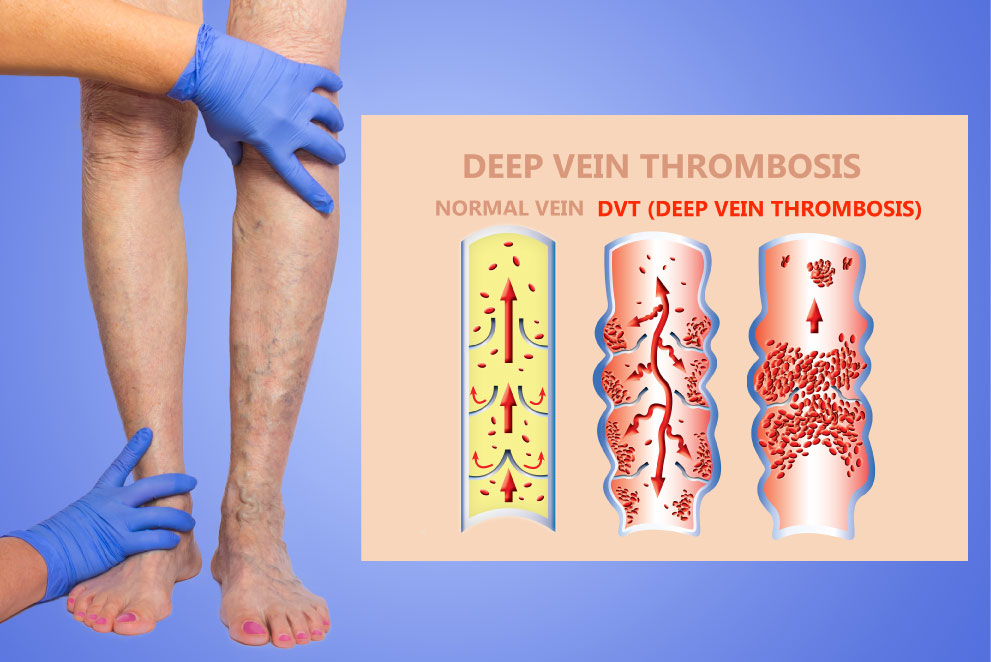Did you know that every year, you have a 1 in 1000 chance of developing a serious condition known as deep vein thrombosis (DVT)? Over the course of a lifetime, the average person has as much as a 2% to 5% chance of developing DVT, which can lead to life-threatening blood clots.
March is DVT Awareness Month, so it’s the perfect time to educate yourself about this condition. Here’s what you need to know about DVT, its symptoms, and how to prevent it.
What is DVT?
DVT is a venous condition which means it affects the body’s veins. It occurs when blood pools and clots deep within your legs, creating blockages that restrict blood flow.
A restriction in the legs’ blood flow can affect your entire body. Most dangerously, a blockage can limit blood flow to your lungs, heart, and brain, causing your body to begin shutting down.
When DVT begins to develop within your body, you are at risk of a blood clot breaking loose, traveling through your veins, reaching a vital organ, and causing a clog. If this occurs, you’ll need emergency care at this critical moment to save your life.
Symptoms of DVT
DVT is a condition that develops over time but is often not recognized until a health emergency occurs. DVT can form a blood clot in your leg(s). It is a common cause of leg pain that keeps people feeling uncomfortable, rubbing their legs, and being restless at night while they try to sleep.
Vascular specialists consider DVT to be a type of leg pain you should not ignore. If you have leg pain with or without any of the following symptoms, see a vascular doctor for a checkup.
- Swelling and/or pain in one leg or, more rarely, both legs
- Skin discoloration and redness in the legs
- A feeling of warmth in the legs or feet
- A feeling of heaviness or throbbing in the legs
You can also develop a more serious condition known as a pulmonary embolism. Seek emergency medical care immediately if you have any of these symptoms:
- Shortness of breath
- Faintness or lightheadedness
- Chest pain
- Fast pulse
- Coughing up blood
Risk Factors for DVT
Certain factors increase your risk of developing DVT. The more of these factors you have, the higher your risk of acquiring DVT at some point in your lifetime.
- Having an inherited blood clotting disorder
- Having a family history of DVT or pulmonary embolism
- Being pregnant
- Being sedentary or on bed rest for long periods
- Injuries and surgeries
- Taking oral contraceptives
- Smoking
- Being overweight/obese
- Having a bowel disease
- Age over 60
You can manage your risk of developing DVT through lifestyle changes like getting more exercise, losing weight, and avoiding sitting still for long periods. However, these changes are not a replacement for seeing a qualified doctor.
See a Vascular Specialist About DVT
It is important to note that DVT can arise with no symptoms in a person who does not seem to have the most common risk factors. This puts it into the category of silent killers, or conditions that can cause your death before you realize there is a problem.
However, here’s some good news: A vascular specialist can often see the warning signs the average person wouldn’t notice. This is why a visit to the vascular specialist is so important.
Contact Maryland Vascular Specialists today to discuss your concerns about DVT and learn about the variety of effective treatment options.
SCHEDULE AN APPOINTMENT with Maryland Vascular Specialists
